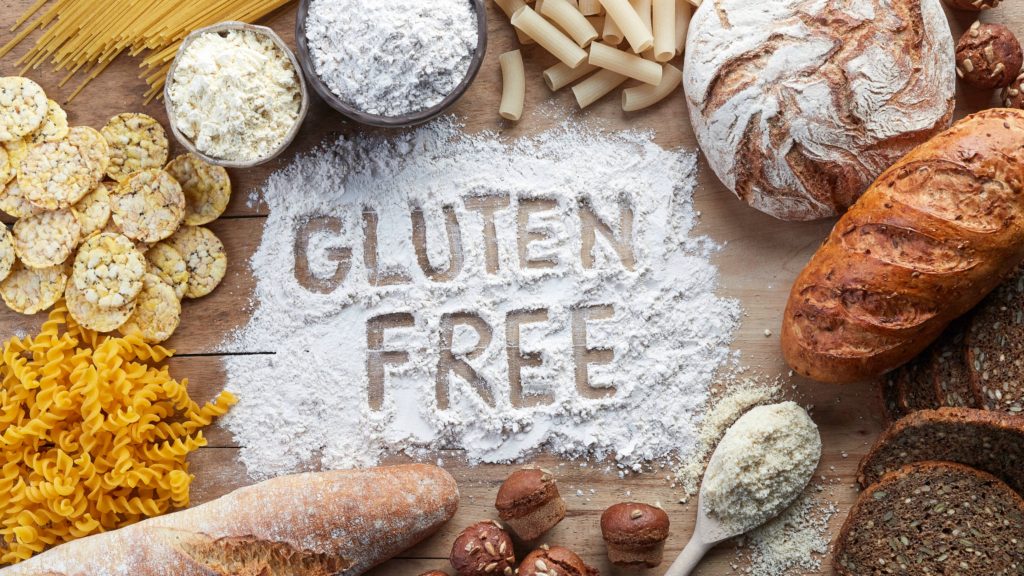-
Making Mayo’s Recipes: Pantry basics for a gluten-free holiday

During the holidays, food traditions move front and center. But if you have celiac disease or gluten sensitivity, your favorite family dishes might be off-limits. However, with a little know-how from Jennifer Welper, executive chef for the Mayo Clinic Healthy Living Program, you can convert grandma's special casserole or dad's secret sauce into a just-as-delicious, gluten-free version. Stock up on Jen's recommended pantry alternatives for easy recipe substitutions.
Gluten-free flours
In recipes that call for all-purpose wheat flour (like that scrumptious topping on apple crumble or breading on chicken), use a gluten-free flour instead. Some common options are:
- Oat flour is made from oats and is available at many grocery stores. Or save yourself a trip and make it yourself. Just grind oats in a blender or food processor until you achieve a texture like flour. Be sure to use certified gluten-free oats. Regular oats are often processed in facilities that also process wheat, which can contaminate the oats with gluten.
- Almond flour is made by grinding almonds together. You can purchase it at the store or make it yourself. To make your own, grind raw or blanched almonds in a blender or food processor. Don't grind them for too long. Otherwise you'll end up with something more like almond butter than almond flour.
- Rice flour is made from white or brown rice. Rice flour is difficult to make at home. So it's probably best to purchase it at the grocery store.
Gluten-free gravy
Some recipes use wheat flour as a thickening agent (think gravy or white sauce). Try a gluten-free thickener instead:
- Cornstarch, tapioca flour or arrowroot powder. You only need one of these options to make a thickening agent. Tapioca flour and arrowroot powder are sometimes used in gluten-free baked goods and nice to have on hand, although they are a little harder to find than cornstarch.
Gluten-free bread crumbs
If your recipe calls for bread crumbs (like meatballs), panko (panko-crusted fish) or wheat crackers (casserole topped with crumbled crackers), try:
- Gluten-free cereals. You can find many gluten-free cereals at the grocery store. They're often made of oats, rice, corn or a mix of gluten-free grains. Just be sure to choose one that doesn't include sugar or other sweeteners. Add the desired amount to your blender or food processor and grind the cereal into a coarse bread-crumb texture.
Gluten-free glaze
In recipes that call for soy sauce in a meat glaze, marinade or other recipe, use:
- Tamari is a wheat-free version of soy sauce. You can find it at your grocery store on the same shelves as the soy sauce.
How to make a substitution
For most basic recipes, you can make a 1:1 substitution. For example, if the recipe calls for 1/2 cup of all-purpose flour, use 1/2 cup of gluten-free flour. All other ingredients in the recipe — given that they are gluten-free — stay the same.
Substituting gluten in baked goods
Substituting flours in baked goods is more complex. The 1:1 substitution ratio for cookies, cakes and breads — which need to rise in the oven — doesn't hold up. To achieve the correct texture in baked goods, you typically need to mix several gluten-free flours together. And it can take a lot of trial and error to find the right mixture. So instead of adapting your favorite baked recipe yourself, seek out a new-to-you gluten-free recipe to try. The hard work of figuring out the baking ratios will already be done for you.
Storage tips
If you don't use gluten-free flours very often, store them in the freezer. Many flours, wheat flour included, go bad when they sit on the shelf for a long time.
This article is written by Mayo Clinic staff. Find more health and medical information on mayoclinic.org.







